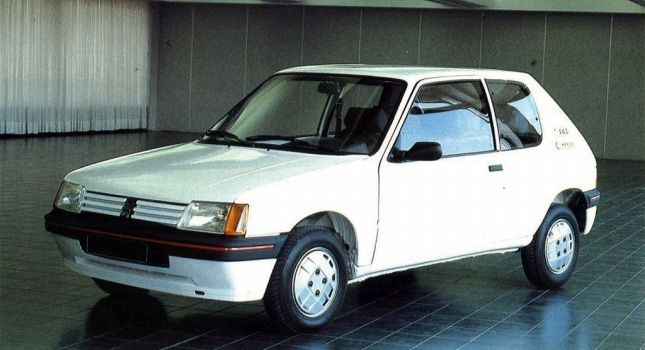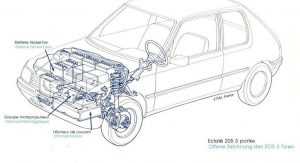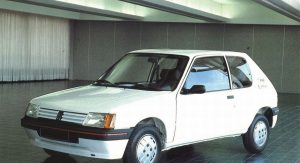Electric vehicles have been a viable alternative to the gasoline and diesel norm for decades. However, it was corporations and the abundance of oil, which ultimately blocked EVs’ way into the mainstream. Still, each and every part of car history has some sort of attempt at making a feasible electric car, and in the 1990s, Peugeot seemed to be very close.
Before the development of the more familiar 106 Electric, the French automaker built a number of demonstrator vehicles, which used the 205 hatchback as a base.
They featured twelve 6V batteries, which may have weighed 300 kg (661 pounds), but they were mounted in the front (to keep the weight balanced) and even with them on-board, the car was still very light, tipping the scales at 850 kg (1,874 pounds).
What’s more impressive was the maximum range that the electric 205 could achieve. If driven constantly at around 40 km/h (25 mph), it could return a claimed range of 200 km (125 miles). At 70 km/h (44 mph), the range drops to 140 km (88 miles). These numbers were also helped by regenerative braking, which works much in the same way as the system found on the new Renault Zoe.
Even if the actual range is lower than what is claimed, the fact is that an electric Peugeot from the 90s is on par with modern EVs, which are far more technologically advanced.
By Andrei Nedelea
Story References: Technologicvehicles
PHOTO GALLERY






